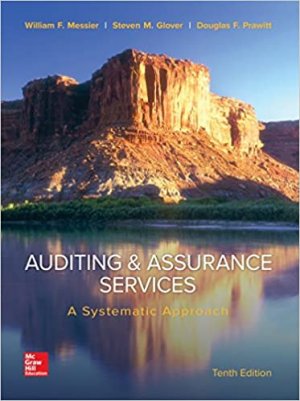
AUDITING & ASSURANCE SERVICES | A Systematic Approach
- by William F.Messier, Steven M.Glover, Douglas F. Prawitt
- Edition: 10th Edition
- ISBN13: 978-0-07-773250-9
- ISBN10:
-
495

Similar Books
-
No books found
total questions: 495

Questions
495

Views

Best Answers
299

Points
5
add reason


